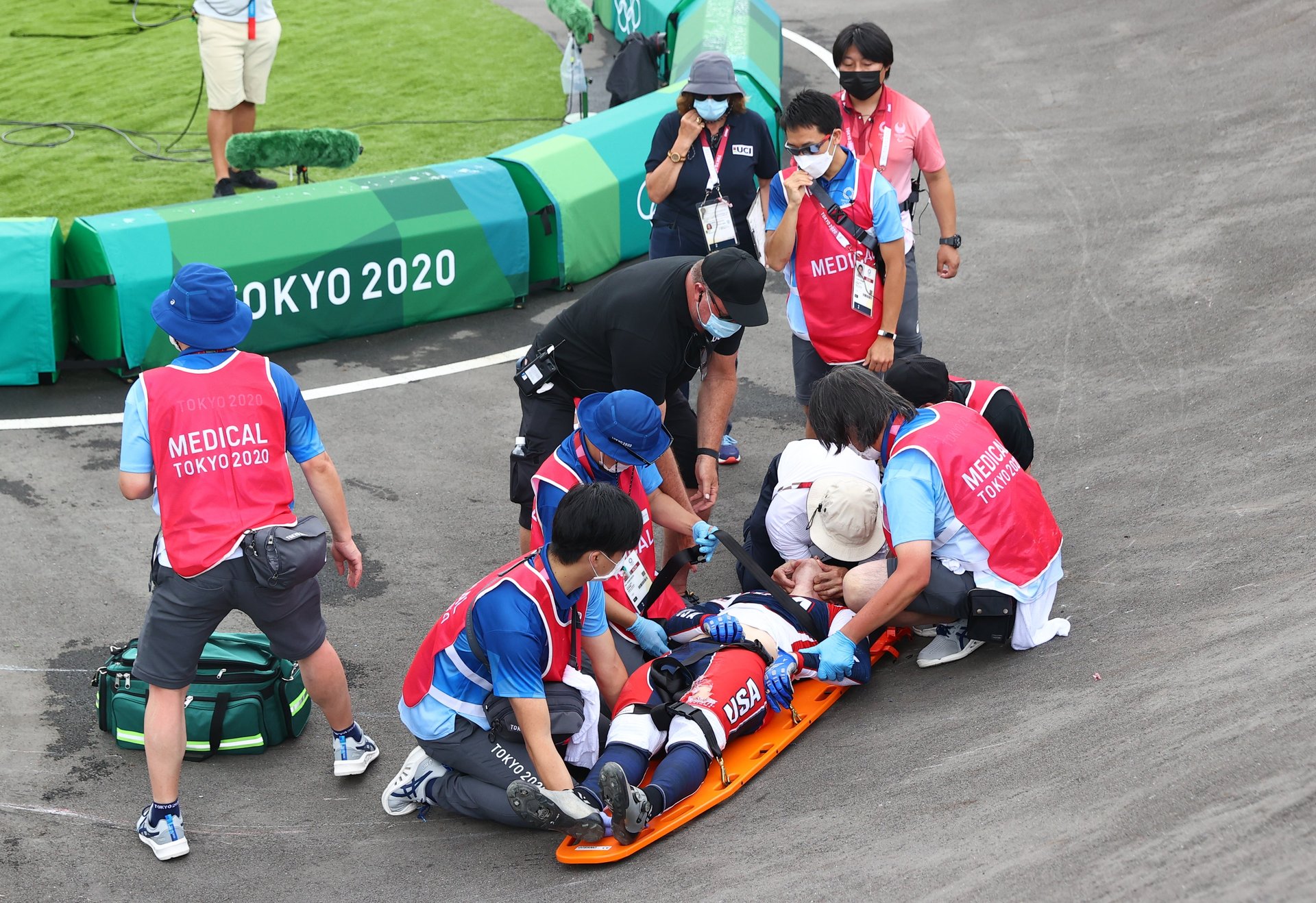
Hi Quartz readers!
Track and field stars at the Olympics are breaking records left and right. Is it these shoes? Or these shoes? Or the track? Or something more sinister?
Highlight reel
- Jamaican sprinter Elaine Thompson-Herah is the first woman to win an Olympic “double-double” in the 100m and 200m after repeating her Rio golds in those events.
- US gymnast Simone Biles got the bronze in the women’s individual balance beam final, with China’s Chenchen Guan and Xijing Tang taking the top two spots.
- In the men’s 400m hurdles, both gold medalist Karsten Warholm (Norway) and second-place finisher Rai Benjamin (US) beat Warholm’s previous world record.
- Spain outscored Japan and Brazil beat Mexico in a penalty shootout in the men’s soccer semi-finals to set up Saturday’s gold medal match.
Danger zone
Given how often Olympic events are called “death defying,” actual deaths at the Games are extremely rare.
In the 125-year history of the Games, there have been just two during competition. Athletes may risk serious injury in sports like gymnastics, pole vaulting, and ski jumping, but the cause of the deaths was more banal. In both instances—that of Francisco Lázaro, a Portuguese marathoner in 1912, and Knud Jensen, a Danish cyclist in 1960—heat stroke or heat exhaustion was blamed.
Not that there haven’t been close calls. German downhill skier Hermann Maier miraculously survived a horrific crash at 75 mph (121 km/h) while competing at Nagano in 1998. And just this week American BMX racer Connor Fields was hospitalized after a bloody crash in a Tokyo semifinal.
As the Olympics expand to include more so-called extreme sports, like rock climbing and big air snowboarding, the chances of injury and death will only increase (perhaps less so for breakdancing, which debuts in 2024).
There have been eight other athletes who died while at the Games, either from accidents in practice—such as Australian skier Ross Milne in 1964 and Georgian luger Nodar Kumaritashvili in 2010—or from car crashes and illness. That grim tally, however, doesn’t include the deceased from one of the Olympics’ darkest days, when 11 Israeli athletes were murdered by terrorists in Munich in 1972. —Oliver Staley
48%: Decline in US primetime viewership on NBC in the first eight days of the Games compared to 2016
4: Age at which Jessica Springsteen, daughter of rocker Bruce Springsteen, started riding horses; she made her Olympic debut in equestrian jumping on Tuesday but failed to qualify for the individual final
6 knots: Minimum wind speed needed for the Olympic sailing events that were postponed Monday due to lack of wind
1-2%: Performance advantage the Tokyo track gives athletes, according to its designer
25,000: Duck hair pins one website has sold daily since Chinese shooter Yang Qian—who has won two gold medals, including the country’s first in Tokyo—said the accessory was her lucky charm
What to watch for

Olympic cycling is going big this year. BMX, or bike motocross, freestyle made its Olympic debut in Tokyo with riders on bicycles traversing a park full of ramps and other obstacles to hurl themselves dozens of feet into the air. It joined BMX racing, as well as the three other established cycling categories: road racing, mountain biking, and track cycling.
Medals have been handed out almost every day since July 24. On Wednesday, there will be final events for men’s team pursuit (two teams of four race against the clock for 4km) and women’s keirin (a track cycling race paced around 45km/h with a two-and-a-half lap dash to the finish).
Quotable
“Who shoots into someone else’s target? Only people like me. The button on my jacket came undone and I felt some discomfort, but time passed and I had to make a shot so I didn’t notice that I was already aiming for someone else’s target.” —Ukraine sport shooter Serhiy Kulish, whose error led to his elimination
The Olympics are too big to be sustainable
The Tokyo Games are representative of an overall declining level of sustainability in the Olympics over time, according to an April 19 paper in the journal Nature by geographers at the University of Lausanne.

The economists developed an index for estimating the sustainability of every Olympics since 1992 in three categories: Ecological, social, and financial. The social and financial categories included metrics like population displacement and what share of the event’s budget was covered by local taxpayers. The ecological category focused on the event’s physical size, the number of attendees, and what share of buildings were new builds. Since 1992, the ecological metric fell the fastest, and put the Tokyo Olympics on par with the infamously destructive Sochi Winter Olympics in 2014.
🎵 This email was produced while singing along to John Williams’s “Olympic Fanfare and Theme.”
Our best wishes for an inspiring day. Get in touch with us at [email protected] and live your best Quartz life by downloading our iOS app and becoming a member. Today’s email was brought to you by Oliver Staley, Michael Coren, Tim McDonnell, and Liz Webber.